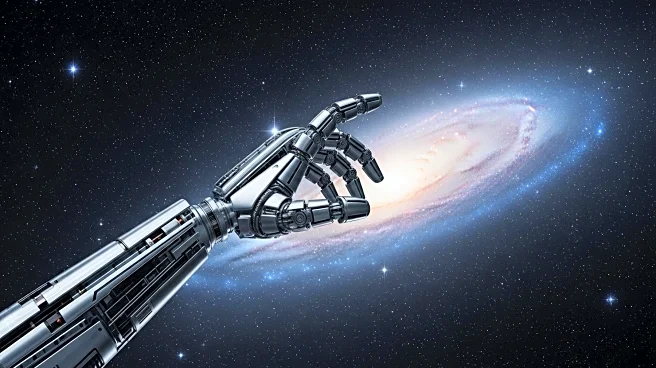What is the story about?
What's Happening?
David Kipping, a professor of astronomy at Columbia University, has proposed a new method for interstellar travel called TARS, or 'Torqued Accelerator using Radiation from the Sun.' This concept involves a solar-powered centrifuge that can propel tiny probes to speeds exceeding the escape velocity needed to leave the solar system. TARS, named after a robot from the film 'Interstellar,' utilizes solar energy to spin paddles, eventually releasing a small spacecraft at high speed. The design aims to overcome the challenges of interstellar missions, which are considered one of humanity's most difficult endeavors. Kipping's idea is still in the conceptual stage, but it has attracted interest from private spaceflight companies willing to offer launch space for a prototype.
Why It's Important?
The development of TARS could revolutionize space exploration by providing a cost-effective and efficient method for reaching interstellar space. This approach could significantly reduce the time and resources needed for such missions, potentially allowing humanity to explore distant star systems. The concept also emphasizes the importance of multi-generational projects in space exploration, suggesting that the benefits of current investments may be realized by future generations. If successful, TARS could pave the way for new scientific discoveries and expand our understanding of the universe.
What's Next?
While TARS is currently a theoretical concept, Kipping has expressed interest in collaborating with engineering students to develop a prototype. The next steps involve refining the design and addressing engineering challenges, such as deploying the panels and ensuring proper telemetry. If a prototype is successfully developed, it could be launched on a future space mission, potentially validating the concept and opening new avenues for interstellar exploration.
AI Generated Content
Do you find this article useful?














